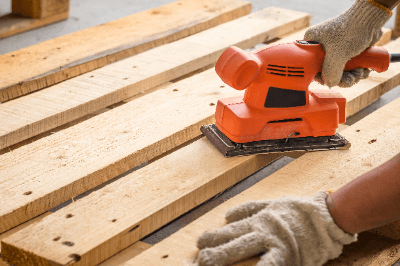What Is a Sample Cutting Machine?
A Sample Cutting Machine is a multi-cutting machine that can cut various materials into specified shapes.
When manufacturing a product, it is first necessary to create a shape at the prototype stage, but if mass production has not been decided or if the product is to be studied, a sample cutting machine is used to flexibly change the shape of the product without making a mold.
Since it can precisely cut various materials, sample cutters are used in the textile industry to cut fabrics, in the construction industry to cut insulation materials, and in the food industry to create shapes for confectionery, bread, and other products.
They are also sometimes used in combination with digital machine tools such as 3D printers. It can create three-dimensional objects at the prototype stage, enabling efficient and accurate prototype production.
The greatest advantage of a sample cutting machine is the flexibility to change the shape of the prototype without making a mold. This saves cost and time when the shape must be changed many times during the prototype stage or when the number of prototypes to be mass-produced is small. In addition, the ability to cut with a high degree of accuracy means that the shape of the prototype can be accurately reproduced.
The ability to create prototype shapes quickly and accurately makes it an excellent tool in terms of flexibility and cost. It contributes to improved productivity and faster R&D in various industries.
Uses of Sample Cutting Machine
Sample Cutting Machines are multi-cutting machines that can cut a variety of materials into specified shapes. They are used to make prototypes that have not yet been mass-produced, items that can only be made once, items that require precision that cannot be reproduced with a mold, and items whose shape needs to be confirmed for study purposes.
Because it can process all kinds of materials, including corrugated cardboard, paper, and foam materials, it is used in the corrugated/paper container industry, the chemical product industry, the heavy packaging industry, the building equipment industry, the bathroom, housing equipment, and renovation industry, and the sign and display industry, among others.
For example, in the corrugated industry, the sample cutting machine can be used to create boxes for a variety of uses, as there are many different box shapes. In the chemical products industry, materials such as plastic and resin are cut to create prototypes. Also, in the building equipment industry, it is used to make parts for furniture and interior decorations.
Because they can cut materials with high precision, sample cutters are used in the sign and display industry to create highly accurate letters and logos, and have a wide variety of uses.
Principle of Sample Cutting Machine
The principle of sample cutting machines consist of cutting by utilizing the resonance phenomenon by applying an external force synchronized with the natural frequency of an object.
The sample cutting machine consists of an oscillator and a transducer. The transducer has a piezoelectric element, and the AC voltage given to the piezoelectric element from the oscillator causes the blade to resonate. The cutter vibrates the blade at high speed in the longitudinal direction, enabling easy cutting without resistance even of materials that are difficult to cut with ordinary cutters.
Cutters emit virtually no swarf, smoke, noise, or sewage, making them an environmentally friendly cutting machine.
Sample cutting machines are often used to cut products in the prototype stage into shape. They are also suitable for making products for which mass production has not been decided, for which accuracy that cannot be reproduced with a mold is required, for which only one product is to be made, or for which the shape needs to be confirmed for study purposes.
Types of Sample Cutting Machine
There are two main types of sample cutting machines: Ultrasonic Cutters and Laser Cutters.
1. Ultrasonic Cutter
Ultrasonic cutters use ultrasonic waves to cut materials. It consists of an oscillator and a transducer. The transducer is cut by resonating the transducer using a piezoelectric element. They can cut with less resistance than conventional cutters and are environmentally friendly as they emit virtually no swarf, smoke, noise, or waste water.
2. Laser Cutter
Laser cutters use lasers to cut materials. Because they can cut materials quickly and with high precision, they are used for a wide variety of materials, including plastics, fabrics, wood, and metals. When the laser beam is irradiated, the material evaporates, resulting in a very clean cut surface. It is also extremely safe and can be operated remotely, making it suitable for unmanned production.
 Sanding is a process technique used to roughen the surface of an item. It is used on wood, metal, and plastic surfaces.
Sanding is a process technique used to roughen the surface of an item. It is used on wood, metal, and plastic surfaces.